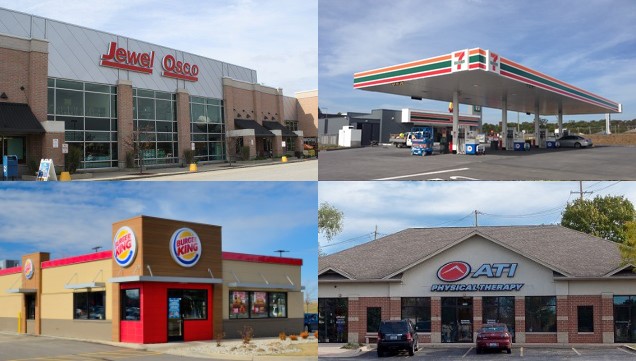 The top brand names, especially in core areas, will be the ones investors are likely to hold onto next year.
The top brand names, especially in core areas, will be the ones investors are likely to hold onto next year.
CHICAGO—The recent increase in the 10-year treasury rate was expected by many to push up cap rates in the nation's single tenant net lease market, but so far, things are relatively quiet. Cap rates for the net lease retail sector only increased by five bps in the third quarter of 2018, according to a new report from Wilmette, IL-based Boulder Group. Rates in the office and industrial sectors were also largely steady.
“The market didn't react to the rise in interest rates, at least not immediately,” Randy Blankstein, president of Boulder, tells GlobeSt.com. “It's a delayed reaction,” and the boost in Treasury rates may take about three to six months to fully impact net lease investment.
In the third quarter, the 10-year treasury yield peaked at 3.10, its second highest level since early 2014. The overall steadiness of cap rates may also be because the rising Treasury rates had the greatest effect on the weakest properties, those in secondary or tertiary markets with no rental escalations and fragile credit. Furthermore, assets priced above $12 million typically purchased by institutional buyers also experienced significant cap rate increases, largely because these buyers are sensitive to financial volatility and make the necessary adjustments.
 Randy Blankstein, president of The Boulder Group, a net lease firm in Wilmette, IL.
Randy Blankstein, president of The Boulder Group, a net lease firm in Wilmette, IL.Furthermore, Treasury rates are “a major issue, but not the only one,” Blankstein adds. Despite a slight rise in the supply of net lease properties in the market, for example, there is a lack of new construction properties with long-term leases. As a result, cap rates for recently constructed properties tenanted by strong credit tenants including 7-Eleven, CVS and FedEx either experienced no cap rate movement or slight compression during the third quarter.
“Capital markets will be a primary concern for investors as they continue to monitor their effect on pricing,” according to Boulder's report. “Transaction velocity should remain high as institutional and fund investors attempt to reach acquisition allocations by year end.”
“The fourth quarter is usually the strongest,” Blankstein says. And certain portions of the market will see more activity. Investors “think it's time to sell the less well-known brand names, especially in secondary or tertiary markets.” Many people believe it's getting late in the economic cycle, and have decided the best properties are the safest, ones in primary markets with top brands like Chick-fil-A and McDonalds.
“The holdings on the periphery are the ones people want to sell,” he adds. And although Blankstein also expects heavy volume into next year, the spread in cap rates between properties on that periphery and ones in the core will continue growing.
© Touchpoint Markets, All Rights Reserved. Request academic re-use from www.copyright.com. All other uses, submit a request to [email protected]. For more inforrmation visit Asset & Logo Licensing.







